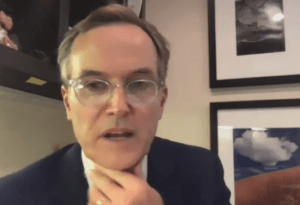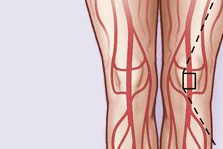
Many changes, both possible and confirmed, are ahead for vascular surgery, according to the final SVS ONLINE session, “Assuring quality in vascular surgical care: The future of centre, programme and surgeon accreditation” held 2 July.
Society for Vascular Surgery (SVS) president Ronald L Dalman and program chair Matthew Eagleton moderated the multi-part session to take a look into the future of vascular surgery. Here are some of the issues explored.
Setting the standard for quality and appropriateness, verification, and quality improvement
Immediate past president Kim Hodgson opened the session by discussing the vital importance for vascular surgery to model the way in delivering quality, appropriate care.
Hodgson presented data demonstrating practitioners across specialties are performing certain vascular procedures at levels far outside the norm as established by practice guidelines and Vascular Quality Initiative (VQI) data. He noted that among specialties, vascular surgeons make up the smallest percentage of this cohort, but as long as vascular surgeons are represented, the specialty must recognise it has a problem.
Hodgson postulated that the current reimbursement system, while created with positive intent, is widely viewed to be misaligned and may be incentivising inappropriate, rather than appropriate, care. Still, every physician should be keeping an eye on his or her own data relative to their colleagues as well as local and national benchmark trends. This is the basis of applying quality improvement principles in practice.
Encouraged by SVS members and public health officials, SVS leaders have spent the past 18 months developing the Vascular Verification and Quality Improvement Program in partnership with the American College of Surgeons. This programme establishes a set of quality standards for the functioning of a “vascular centre of excellence” and seeks to help all practices raise the standard of quality. R Clement Darling III and Michel S Makaroun will facilitate the first pilot testing of the standards and the programme for inpatient and outpatient care.
Identity and strength for vascular surgery as a specialty
Alan Dietzek emphasised the continuing need for vascular surgery as a specialty to have a strong, recognised identity. Vascular surgery is a small specialty swimming amongst giants such as general surgery and cardiology. He noted it is essential for the survival of the specialty to stand on its own and separate from the American Board of Surgery (ABS) so vascular surgery can stand on equal ground with the ABS and Internal Medicine Board at the American Board of Medical Specialties. Dietzek acknowledged that a new ABVS cannot likely improve upon the outstanding job and support provided at the American Board of Surgery through the Vascular Surgery Board (VSB), but “ABVS is more than accreditation”; it is about visibility, strength and independence of our specialty, which is vulnerable under the current conditions.”
Currently, vascular surgery “has no seat at the ABMS (American Board of Medical Specialists) table,” recognised by the medical community and public as the main body for certification of medical specialists, he said. Dietzek queried as to why the U.S. News & World Report publication fails to recognise vascular surgery in its own report citing abdominal aortic aneurysm (AAA) metrics when vascular surgery performs the vast majority of these procedures but includes cardiology and thoracic surgery in that title. Dietzek respectfully requested the publication to make this simple change. Such a move would be a “giant leap forward for the education of patients,” he said.
“We need to take our heads out of the sand,” said Dietzek. “Without an independent [Review Committee for Vascular Surgery] we will become relatively irrelevant in the vascular disease domain.” Moreover, an independent Review Committee will provide innovation in credentialing and training vascular surgeons and help the specialty “achieve the visibility and recognition we deserve.”
In closing, Dietzek added that vascular surgeons will remain the “firepersons” of the operating room. “Now,” he said, “we need a firehouse.”
Future of board certification/accreditation
“Certification of vascular surgery trainees is changing like never before,” with the introduction of Entrustable Professional Activities (EPAs), inclusion of simulation-based learning and testing, and continuous certification, said Gilbert R. Upchurch Jr, chair of the Vascular Surgery Board.
The traditional training approach is time-based, geared to the same experiences for all and can result in a variable product reflecting different rates of learning. Competency-based education is more focused on achieving competence for all.
Canada is moving toward EPAs, said Upchurch. Benefits include less variability in training, minimums for all trainees, aligning assessment with society needs and possible credentialing in residency to allow graduated independent practice and in transition to practice based on demonstrated competence.
Upchurch also discussed surgery re-certification, including the new “continuous certification,” and results from a 2017 survey:
- 58% prefer a more frequent, open-book, lower-stakes assessments to the 10-year model
- 67% prefer assessment be every two years or more
- Majorities are strongly in favour of being tested on both core surgery concepts (86%) and practice-specific content (83%)
Training the next generation: Association of Program Directors in Vascular Surgery (APDVS)
Speaking from the perspective of program directors, APDVS past president Amy Reed maintained, simply, “integrated training is here to stay. It is not an experiment and it is not second-tier. We cannot ignore this; 1990s training is not today’s.”
Integrated pathways have resulted in more vascular surgeons in the workforce than before. However, the specialty needs to sustain interest among and recruit Generation Z, and also increase diversity, she said. “This issue is not going to go away without each one of you doing your part, reaching out and overcoming our stereotypes of gender and skin colour.”
She suggested the future holds a move to EPAs and reviving the “3+3” program (three years of general and three years of vascular surgery training) currently not in use. That pathway would save fellows time and money and increase the surgeons in the workforce, she said. And case minimums, she predicted, will be greatly reduced or eliminated in favour of quality outcomes and experience.
“Only we have the power to change ourselves; we cannot grow if we do not change,” she said. Reed also promised change would not be all roses and sunshine, quoting the legendary Apple inventor Steve Jobs: “If you want to make everyone happy, don’t be a leader. Sell ice cream.”
Most speakers, in fact, stressed the move to quality outcomes. “Outcome measures are coming, whether we like or not,” said Dalman. Ben Harder of U.S. News & World Report, in speaking of its physician rankings, said “outcomes is our focus going forward. It is part of the evolution of our public reporting programme.”
Dalman also noted the SVS’ upcoming branding campaign will help differentiate vascular surgeons from other specialists working in the same space. “We set the standards,” he said. Referring to the SVS ONLINE programme he said, “Everything we have talked about in the past two weeks focuses on improved care. The underlying theme is improving patient care.
“The best way to promote ourselves is to back it up with what we deliver.”













